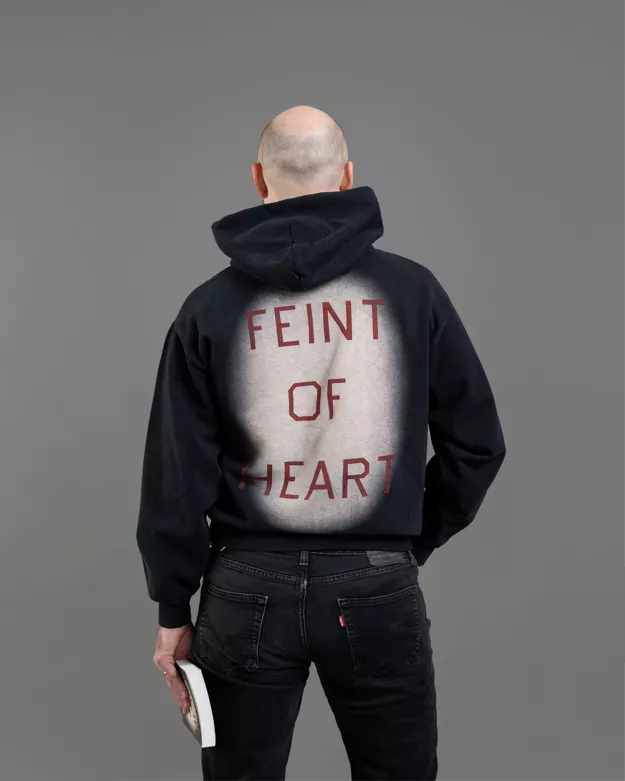About the artwork:
In this pigmented inkjet print, Ruscha explores the concept of mirroring. As the largest in his “Bow-Tie Landscape” series, the artist has created a symmetrical image of the Sonoran Desert in California by reflecting the same picture side by side.
Ed Ruscha's paintings, drawings, photographs and prints intersect elements of urban development in Southern California, such as gas stations, freeways, signs, logos, palm trees and swimming pools. The artist’s word paintings stand on their own as compelling intersections between art and poetry—employing a distinctive language that presents new possibilities for meaning. Since his emergence from the 1960s West Coast art scene, Ruscha has undeniably altered the genre of American landscape art.
About the artist:
Ruscha's paintings, drawings, photographs and prints frequently depict intersections and other elements of urban development in Southern California: gas stations and freeways; signs and logos; palm trees and swimming pools. The artist’s word works, his unique compositions that depict words, stand on their own as compelling intersections between art and poetry—employing distinctive language that presents strange new possibilities for meaning. Ruscha's body of work has fundamentally changed American landscape art.
Ed Ruscha was born in Omaha, Nebraska in 1937 and moved to Oklahoma City at the age of four. When he was 18, the artist moved to Los Angeles, California where he studied at the Chouinard Art Institute. Ruscha has lived there ever since.
In 2004, exhibitions of Ruscha's work took place at the Whitney Museum of American Art in New York City, the Museum of Contemporary Art in Los Angeles, California and the National Gallery in Washington, DC. That same year, critic Peter Schjeldahl called Ruscha “one of the four most influential artists to have emerged in the 1960s.”
At Crown Point Press in 2001, Ruscha made a portfolio of prints called Los Francisco San Angeles. Each of the seven etchings in the portfolio shows street intersections from San Francisco and Los Angeles juxtaposed over each other. In 2003, the artist came back to do a larger version of the small portfolio. “The power of Ruscha’s style is at its most emblematic in these three large soft ground etchings,” Kathan Brown wrote in that exhibition’s Overview. “Their ease and simple clarity belie the odd way they have of bringing us back again and again to ponder them and smile.” In this project, Ruscha’s California landscape is beyond city borders. These prints are like inside jokes; his words are often simple, elements of the California culture’s shared vocabulary—like street names, clichés, or snippets of conversation—but in an unfamiliar context where they stand on their own. Ruscha's word works communicate in what Brown calls “jargon-free, matter-of-fact, but enigmatic thinking.”
Ruscha is represented by Gagosian Gallery. The artist has had numerous retrospective exhibitions, including at: the San Francisco Museum of Modern Art in California (1983); the Centre Georges Pompidou in Paris, France (1989); the Hirshhorn Museum in Los Angeles, California (2000); and the Museo Nacional Centro de Arte Reina Sofia in Madrid, Spain (2002).
In 2009, the traveling exhibition Ed Ruscha: 50 Years of Painting debuted at the Hayward Gallery in London, UK. In 2016, a major thematic exhibition of the artist's work, Ed Ruscha and the Great American West, was presented at the de Young Museum in San Francisco, California. Crown Point Press concurrently exhibited Made in San Francisco, Ed Ruscha Etchings: 1984-2014, a survey exhibition of the thirty-nine etchings made by the artist at the Crown Point studio as well as an accompanying catalog. In 2018, the National Gallery of Art in London, UK exhibited Ed Ruscha: Course of Empire. That same year, Secession in Vienna, Austria exhibited Ed Ruscha: Double Americanisms. In 2023, the Museum of Modern Art (MoMA) in New York exhibited ED RUSCHA / NOW THEN, a major retrospective of over 200 works which then traveled to the Los Angeles County Museum of Art (LACMA) in 2024.
Ruscha's work is held in the collections of major museums internationally. The artist's public commissions include murals at: the Miami-Dade Public Library in Miami, Florida; the Museum of Contemporary Art San Diego in California; and the Denver Central Library in Colorado.
Ed Ruscha was the United States representative at the 51st Venice Biennale in 2005. In 2019, the artist was awarded the J. Paul Getty Medal, the Getty Museum’s highest honor.






